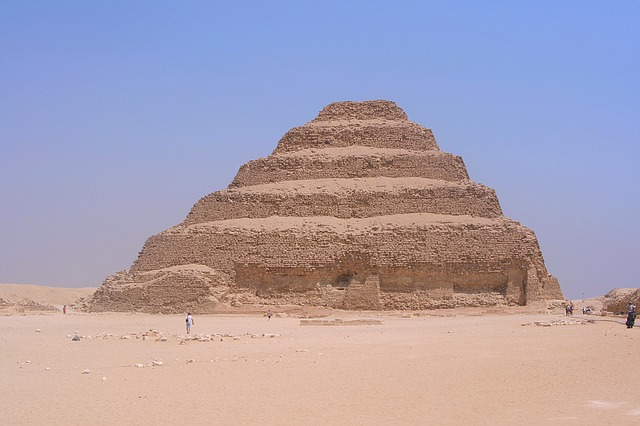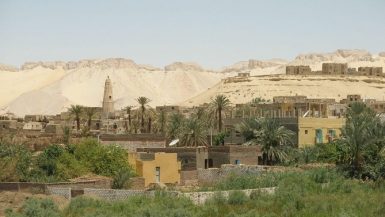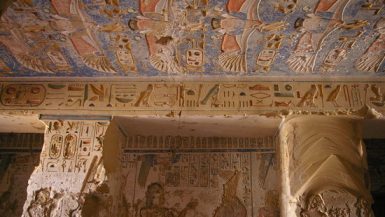Pyramid of Djoser | Ankh |
The most prominent monument at Saqqara is the Step Pyramid of Djoser, first king of the 3rd Dynasty (ca. 2650-2575 BC).
This structure, believed to have been designed by a high official named Imhotep is the first pyramid and the earliest example of large-scale stone construction in Egypt.
The Step Pyramid of Djoser stands at the heart of a large ritual complex, which covers roughly 15 ha (37 acres).
A massive buttressed limestone wall surrounds the area, its exterior surface carved with niches in imitation of a royal palace façade, within which a number of different structures once stood.
Pyramid of Djoser
The pyramid of Djoser itself was first conceived as a large square mastaba, subsequently enlarged in several stages over the course of Djoser’s reign.
The entire structure was originally covered with a casing of fine white limestone. Below the center of the pyramid of Djoser is a large vertical shaft, at the bottom of which lies a granite burial vault.
The vault was sealed with a granite plug weighing some 3.5 tons; nevertheless, robbers were able to enter the tomb in antiquity, making off with the king’s treasures.
The Step Pyramid of Djoser
A few mummy fragments were found in the vault in modern times, but carbon-dating has indicated that they are from a much later date than the reign of Djoser.
In addition to the main shaft, eleven smaller vertical shafts lie below the eastern side of the pyramid of Djoser, leading to galleries that extend to the west.
We know from the presence of two intact alabaster sarcophagi, as well as fragments of others, that four of these galleries were used for the burials of royal family members.
The other galleries were filled with stone vessels, some dating to the Early Dynastic era and most likely buried here to associate Djoser with his predecessors.
king’s apartment
The walls of the ‘king’s apartment’ are covered with blue faience tiles laid on a limestone background, imitating a reed-mat façade with niches containing carved scenes depicting the king performing rituals for his Sed-Festival (Jubilee).
Subsidiary structures surround the Step pyramid of Djoser. The South Tomb, the specific function of which is unclear, has a long descending underground corridor that leads to a series of chambers.
Like the ‘king’s apartment’, its walls are lined with blue faience tiles and carved reliefs of the king.
Pyramid of Djoser Facts
A series of “dummy” buildings to the east of the pyramid has been identified as a sed-festival complex was the ritual location for the eternal celebration of the king’s rejuvenation.
The stone architecture of these buildings was carved to represent perishable materials, such as wooden beams and reed matting.
This large pyramid-funerary complex was built for the transformation of the deceased king into a god, and to ensure his well-being in the afterlife through the maintenance of his mortuary cult.






Leave a reply